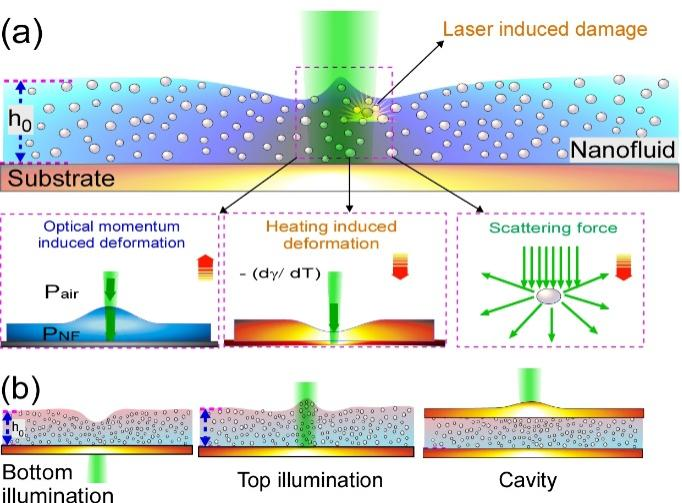Author: Gopal Verma |
Nanofluids (NFs) have been found to possess enhanced thermophysical properties compared to those of bare fluids like organic solvents or water. Since the first study was published in 1951, NFs have emerged as promising heat transport fluids with enhanced thermal conductivity in a wide range of technological applications, e.g. electronic cooling, solar water heating devices, nuclear reactors, radiators. Therefore, the precise characterizations of surface and bulk thermophysical properties of a NF are indispensable to calibrate them and predict their capabilities.
In a recent study published in Light Science and Applications, researchers from Changchun Institute of Optics, Fine Mechanics and Physics (CIOMP) of the Chinese Academy of Sciences proposed a versatile optical technique based on pump excitation-probe interferometry to characterize the thermophysical properties of both nanofluids and biological fluids in a contactless way, and thus address the challenges for thermocapillary deformation that limit its application.
Various methods have been used to explore the thermophysical properties of NF and provide characterizations of NF. Thermocapillary deformation induced from localized laser heating have been used to measure the thermal diffusivity and monitor the organic impurities in water.
However, due to its direct laser-fluid interaction, thermocapillary deformation has two outstanding challenges which limit its practical application. The first is the fact that it only works for pure fluids, because for nanofluids and biofluids, a complex interplay of radiation, thermocapillarity, and scattering forces emerges, which can lead to inaccurate determination of thermophysical properties. The second challenge is that thermocapillary deformation does not work for applications where the pump laser can lead to damage of the biofluid and systems where the fluid is confined in a closed surface.

Schematics of the proposed configurations including bottom illumination, top illumination, and cavity configurations (Image by Verma)
In their study, the CIOMP team illustrated three very different configurations. They heated the NF from the bottom through an opaque substrate, and provided the first scale-scale measurements of the thermophysical properties (viscosity, surface tension coefficient, and diffusivity) of complex NF and bio-fluid without damaging and competing forces.
Researchers also illuminated the fluid from its free surface (exposure from the top for deposited drops), and showed a precise characterization of NF by quantitively isolating the competing forces, taking advantage of the different time scales of these forces.
In the third configuration, the team investigated thermophysical properties of NFs when confined in a metal-cavity. In this case, the transient thermoelastic deformation of metal surface provides the properties of NF as well as thermo-mechanical properties of the metal.
"Considering this versatility, our technique works for nearly all liquids and can thus be applied to a wide range of application scenarios for precise in-situ characterization of the thermophysical properties of complex fluids at a small scale," said Gopal Verma, leading researcher of the study from CIOMP.
Gopal Verma
Changchun Institute of Optics, Fine Mechanics and Physics
E-mail: gopal@ciomp.ac.cn
